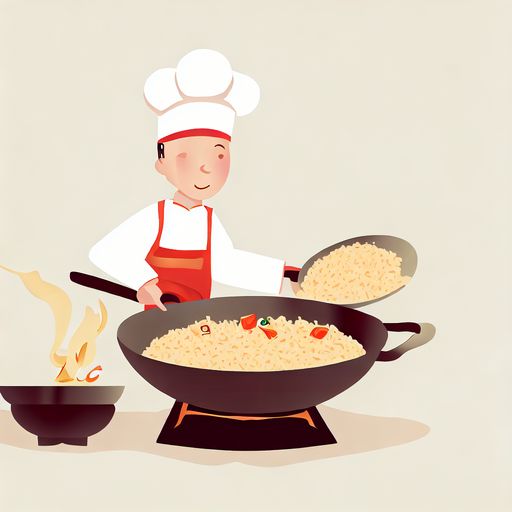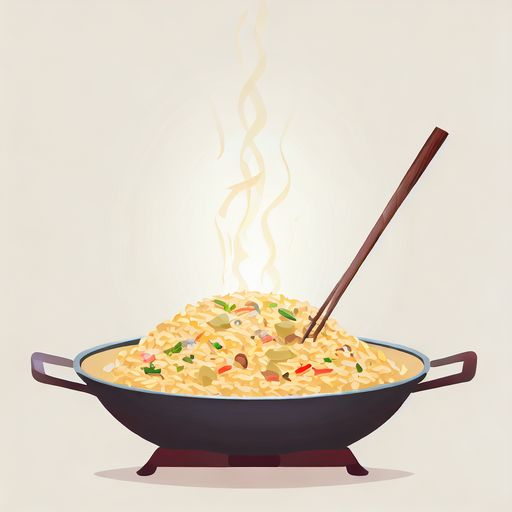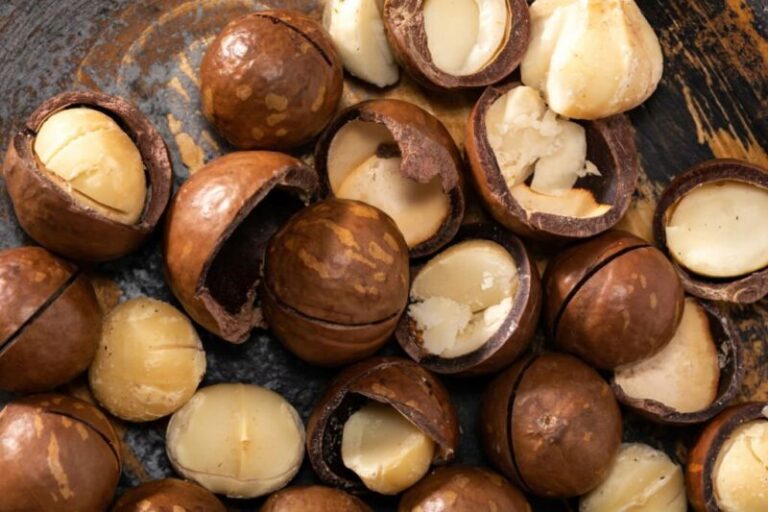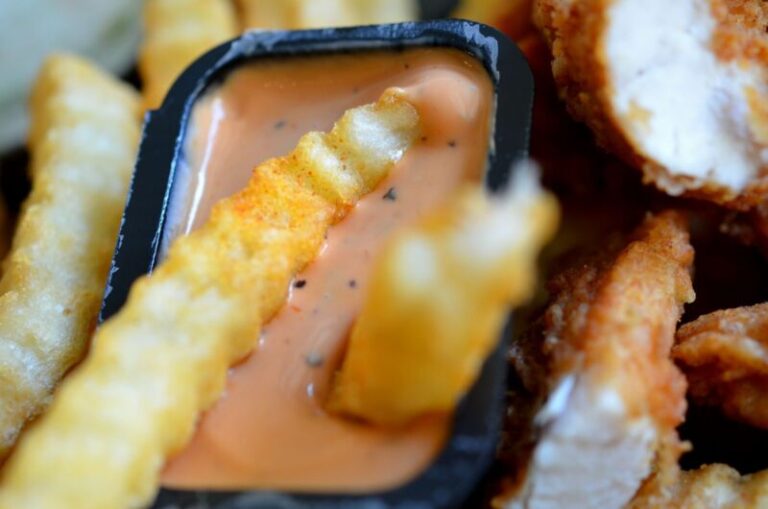What Rice Is Best For Fried Rice?
Fried rice is a classic Asian dish that has become beloved all around the world. When cooked properly, fried rice is flavorful and texturally pleasing – dry and fluffy individual grains coated in oil, seasonings, vegetables and protein. But the key to great fried rice lies in choosing the right rice.
Not all rice varieties work well in fried rice. The characteristics of the grains, how much they stick together, and how well they hold up to tossing and frying can make or break your fried rice dish. So what is the best rice for fried rice?
Types of Rice Commonly Used for Fried Rice

There are three main types of rice that are commonly used to make excellent fried rice.
Jasmine Rice
Jasmine rice, sometimes known as Thai fragrant rice, is a long grain variety that is commonly used in Chinese restaurants for fried rice. Jasmine rice grains are dry, fluffy, and slightly translucent when cooked. The grains have a fragrant aroma and taste, while still being relatively neutral. When cooked, the grains are drier and less sticky than typical long grain rice.
The drier, chewy texture makes jasmine rice perfect for fried rice. The grains can withstand being tossed and fried without breaking down too much. Jasmine rice is easy to find at most grocery stores and is reasonably priced. For these reasons, jasmine rice is arguably the most popular choice for making homemade fried rice.
Regular Long Grain White Rice
Regular long grain white rice, sometimes labeled as just “long grain rice” is another excellent choice for fried rice. It is the least expensive and most commonly available variety. When cooked properly, the grains are fluffy, separate, and neutral in flavor. This allows the rice to soak up and complement the other fried rice flavors easily.
The texture is not quite as dry and firm as jasmine rice. But when chilled and cooked at high heat, the grains fry up nicely and absorb sauce flavors. Use about 1 cup uncooked rice per 3 cups water for best results. For an affordable fried rice option, basic long grain rice can’t be beat.
Basmati Rice
Traditionally, basmati rice is used in Indian or Middle Eastern rice dishes like biryani or pilaf. But its unique properties also lend well to fried rice. Basmati grains are incredibly long and slender when cooked. They also have a fragrant, nutty popcorn-like aroma.
When using basmati rice for fried rice, make sure to rinse the grains well before cooking. This helps reduce how much the grains stick together. The result is rice with dry, separate grains perfect for frying. Just adjust your seasonings to complement the natural basmati flavor.
How to Cook Rice for Fried Rice

To achieve the best fried rice texture, there are some specific methods you should follow when cooking your rice.
Rinsing
Whichever type of rice you choose, be sure to rinse it thoroughly before cooking. Rice grains have a starch coating that can cause them to stick together. Rinsing removes excess starch for fluffier rice.
Place the rice in a mesh strainer and rinse under running water, swirling the grains with your hand. Rinse until the water runs almost clear. This helps prevent mushy, sticky rice grains.
Cooking Methods
For fried rice, overcooking the rice can ruin the texture. There are two easy methods to cook rice perfectly:
- Microwave rice cooker – Add rice and water to the cooker per package instructions. Cook covered for a quick, easy rice cooking method.
- Saucepan – Boil water in a saucepan then add rice. Cook at a simmer, covered, for about 15 minutes or until water is absorbed. Then remove from heat and allow to steam with the lid on for 10 more minutes.
Whichever you choose, be sure to use the proper rice to water ratio and don’t overcook the rice into a mushy consistency.
Importance of Cooling and Drying Rice
The cooked rice must be cooled completely before making fried rice. Hot rice will be sticky and soggy instead of dry and separate.
Cooling
After cooking, immediately spread or fluff the rice onto a sheet pan or plate to allow heat to escape quickly. You want the internal temperature to reduce to room temperature as fast as possible.
To speed up cooling, you can refrigerate the rice for about 30 minutes after cooking. Or even freeze batches of cooked rice for later use.
Drying
In addition to cooling the rice, moisture should be evaporated out for the best texture. Spreading out the grains allows moisture to escape and aids the drying process. You can also use a fan blowing over the rice.
Let the rice cool and dry for at least 30 minutes on the counter after cooking. Refrigerating overnight is ideal, as this dries rice most effectively.
Adding Egg to Fried Rice

Scrambled egg is a classic fried rice ingredient. But when you add the egg impacts the end result. Here are two methods:
- Cook egg first – Whisk egg into large, quick-cooking chunks or strips before adding to the rice. This creates fluffy scrambled egg pieces.
- Add egg last – Push cooked rice to the side. Scramble egg into the empty space, then mix together. The egg coats each grain of rice.
Try both ways to find your preference. Adding egg last allows it to act as a sauce binding the ingredients together.
Secrets of Good Chinese Fried Rice
Follow these tricks to make restaurant-quality Chinese fried rice at home:
- Use pre-cooked, cooled jasmine or basmati rice. Day old rice works best.
- Cook in a large wok or non-stick pan for easy tossing and movement.
- Use high heat to fry rice and develop a crispy bottom crust.
- Add enough vegetable oil to lightly coat grains and prevent sticking.
- Add soy sauce, sesame oil, and other sauces in moderation. A little goes a long way.
Troubleshooting Mushy Fried Rice
What’s worse than dry, tasteless fried rice? Fried rice with a nasty mushy or sticky texture! Avoid this with these tips:
- Not rinsing rice causes excess starch that makes grains stick.
- Using freshly cooked hot rice leads to mushiness. Allow rice to cool and dry fully before frying.
- Cooking over too low heat prevents rice from crisping and separates grains.
- Adding too much soy sauce or sauce makes rice soggy. Use sauces sparingly.
Conclusion
The fluffy yet slightly chewy texture of jasmine rice makes it the most popular choice for homemade or takeout fried rice. For a cheaper option, regular long grain rice can also produce delicious results when cooled and cooked properly.
Just be sure to thoroughly rinse excess starch from rice before cooking. Let rice cool completely before frying for separated, non-soggy grains. Use high heat, oil, seasonings, protein and vegetables in moderation. Now go enjoy making your perfect batch of fried rice!
Have your own fried rice tips or tricks? Share in the comments below!





